The CalMac ferry Hebrides runs from the Isle of Skye to Loch Maddy in the Outer Hebrides. We spent several nights anchored at Loch Maddy beneath dramatic North Lee, and enjoyed watching the Hebrides arrive and dock, particularly during a storm where we saw winds to 60 knots. We got the opposite perspective, with a view back to Dirona, when we took the ferry on a day trip to Isle of Skye. And we spent an afternoon walking through the village of Lochmaddy and visiting the museum there.
Trip highlights from September 2nd through 5th at Loch Maddy in the Outer Hebrides, Scotland follow. Click any image for a larger view, or click the position to view the location on a map. And a live map of our current route and most recent log entries always is available at http://mvdirona.com/maps
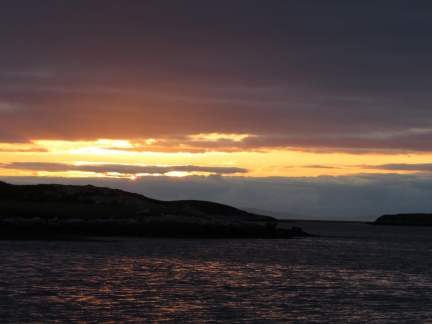 |
Sunrise
Position: -7 10.05, 57 30.49
Sunrise at Flodday Sound.
|
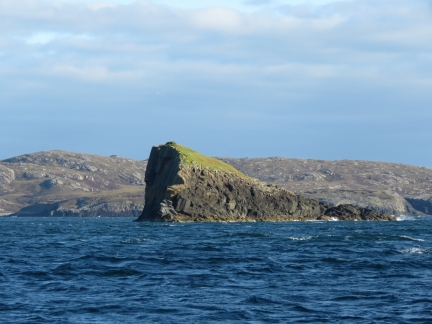 |
Madadh Gruamach
Position: -7 5.89, 57 34.90
Madadh Gruamach, with it’s calved-away southern shore, just south of Loch Maddy.
|
 |
Madadh Mor
Position: -7 5.55, 57 35.72
Looking south back to Madadh Mor, with it’s twin Madadh Gruamach in the background as we near Loch Maddy.
|
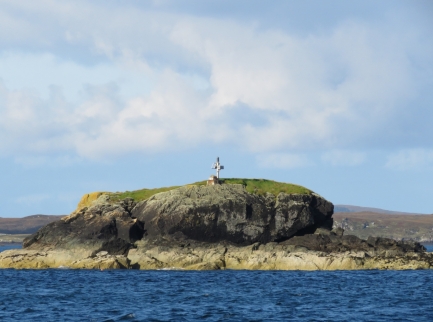 |
Glas Eilean Mor
Position: -7 5.97, 57 35.96
Grass-covered Glas Eilean Mor (Glas means green or grey in Gaelic) containing a navigation marker at the entrance to Loch Maddy.
|
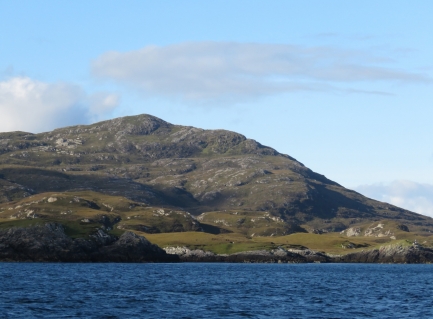 |
North Lee
Position: -7 5.80, 57 35.90
862ft (263m) North Lee rising above the southern shore of Loch Maddy.
|
 |
Bilge Pump Alert
Position: -7 9.12, 57 35.62
As part of the modifications following the water ingress issue we had crossing the Atlantic, we added a circuit to turn the bilge pump on directly in the engine room so that it could be safely operated by a single person. As part of that implementation, we also put an indicator on the dash showing when it was on. This is what it looks like when the bilge pump is on: the red light at bottom right indicates the bilge pump is on, and we’ve also tied it into our general red check light at bottom left.
|
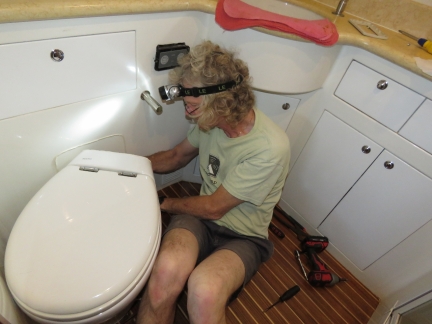 |
Head Maintenance
Position: -7 9.13, 57 35.62
The master head wasn’t flushing well, so James investigated.
|
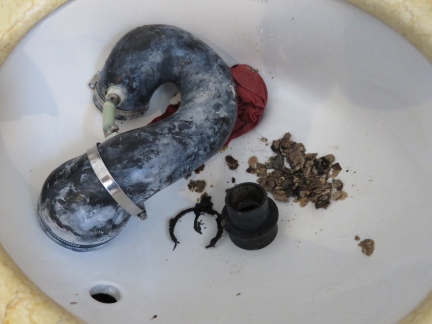 |
Pipe
Position: -7 9.12, 57 35.62
The large black pipe connects to toilet bowl to the motor and was full of calcification. The small light green vent hose at left also was calcified and plugged and the lower check valve at bottom right was peeling away.
|
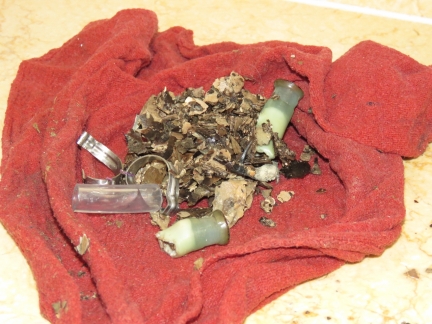 |
Debris
Position: -7 9.12, 57 35.62
We replaced the vent hose and lower check valve and the toilet is back to 100% functional. This is some of the debris left from the job.
|
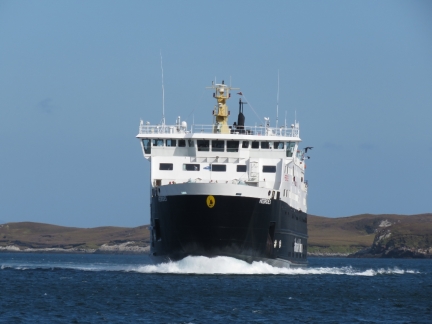 |
Hebrides
Position: -7 9.13, 57 35.62
The CalMac ferry Hebrides arriving into Loch Maddy pushing a load of water in front. The course into Loch Maddy takes the big ship directly toward us within a few hundred meters, until it turns off to the ferry dock.
|
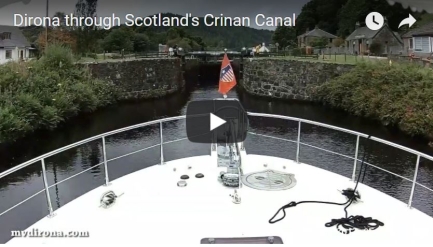 |
Crinan Canal Video
Position: -7 9.12, 57 35.62
We’ve been using our KVH V7-IP satellite data system through most of our time in the Hebrides and finally got some affordable connectivity at Loch Maddy. Surprisingly, neither of our local cellular data plans work here, but we can get metered WiFi at £5 for 3 hours. So we’ve finally uploaded the video of our three-day trip through the Crinan Canal: Dirona through Scotland’s Crinan Canal.
The Crinan Canal is a 9-mile, 15-lock passage between Ardrishaig and Crinan in Scotland. The canal came online in 1801 largely serving commercial traffic and allowing them to avoid the longer run around Kintyre Peninsula and the exposed and current-swept Mull of Kintyre. Today the lock system is used by recreational boaters either avoiding that same long run around the Mull of Kintyre or just wanting to experience the beauty of the canal. On Dirona, we have in the past transited large lock systems including the Columbia and Snake river locks but what makes the Crinan Canal special is the intimacy of the trip. It’s barely bigger than the boat, the Scottish countryside is beautiful, and the locks are all operated by hand. Boaters have to run the locks themselves including providing the “horsepower” to open and close the large wooden gates and actuate the sluice gates. It makes for a really fun trip and, with only two people on the boat, it’s surprisingly busy. As is often the case in Scotland, we had driving rain, bright sun, still conditions, and wind gusts to 30 kts. The rain and wind made things more challenging with Jennifer on shore operating the locks and James on the boat moving in and out of the locks and tending the lines. |
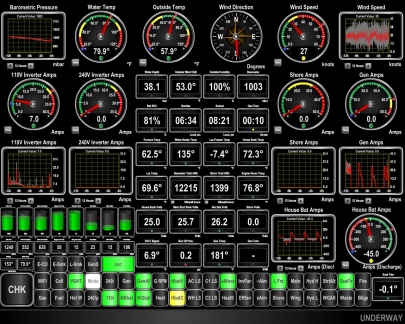 |
60 knots
Position: -7 9.13, 57 35.62
We’re tucked away at Loch Maddy on North Uist while the first of several deep low pressure systems pass through over the next few days. Since arriving yesterday, the winds have steadily been blowing 20-30 kts, with frequent gusts over 40 kts, some over 50 kts and one last night to 60 kts. Dirona is dancing around quite a bit at anchor, when normally we don’t move much at all. And when those big gusts go through, the boat leans over more than five degrees.
We’ve only seen winds this high once before at anchor, and never in the current boat. The anchor is well-set on a 5:1 scope with an all-chain rode, so we’re not concerned about dragging. Hopefully we’ll have a bit of a lull tomorrow morning to reach Loch Tarbert on South Harris. |
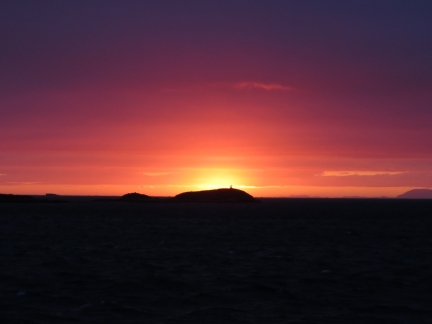 |
Sunrise
Position: -7 9.14, 57 35.62
Beautiful sunrise over Glas Eilean Mor from our anchorage in Loch Maddy.
|
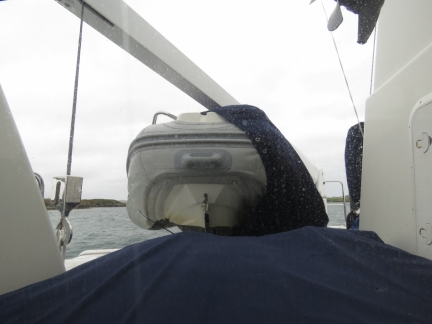 |
Dingy Cover
Position: -7 9.13, 57 35.62
Our tender has a slow leak and loses air over time. The tubes had deflated slightly overnight, enough to loosen the coverwhich was blown off to the side in the big winds. Fortunately we have a bungee that reaches underneath the tender from one side to the other (the black line visible underneath to the left), or we might have lost the cover.
|
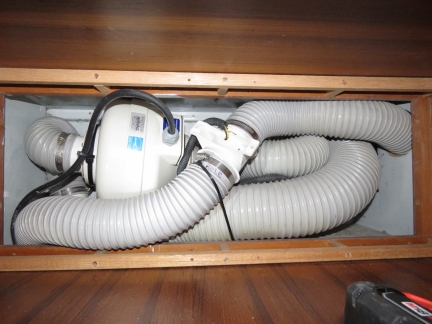 |
Spaghetti
Position: -7 9.13, 57 35.62
While trying to address high engine-room temperatures during the commisioning of Dirona in early 2010, extra flow-assist fans were added to the forward engine room vents. Much later, after careful study in controlled conditions when operating for days at a time, we determined that these fans didn’t have a measurable impact. Since they consume power without helping to cool, we long ago disabled them. Today we decided to remove the fans entirely since they take some space that could otherwise be used for storage. This is the first time we have seen the duct work and, seeing the back and forth weave, it’s not entirely surprising that these fans didn’t improve airflow in the engine room.
|
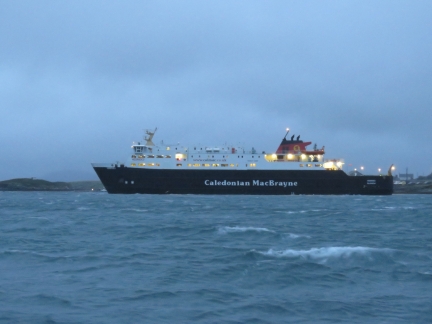 |
Hebrides
Position: -7 9.13, 57 35.62
We watched with interest as the crew docked the ferry Hebrides with steady 30-40-kt winds blowing the vessel onto the pier. In lighter winds, they just brought the ferry parallel with the dock and slid it in sideways using thrusters. But these big winds would push the ferry potentially uncontrollably-quickly toward the dock, even against the powerful thrusters. The crew instead brought the ferry up against the pier with the bow directly into the wind, 90 degrees to where it will eventually dock. They inched forward so the air pressure on the bow side is slightly higher than the pressure on the rear and the boat slowly rotated around at a controlled speed into the docking position. This was remarkably effective—the vessel appeared in control the entire time.
|
 |
Hebrides Aground
Position: -7 9.08, 57 35.62
Just beyond the ferry dock are the pontoons for the Loch Maddy marina. We’ve read that when the ferry arrives with its big bow lifted to expose the boarding ramp, those watching from a moored boat feel as if the ferry is about to swallow them up. That almost happened a year ago, in similar gale-force wind conditions. While approaching the dock “control of the ferry’s port controllable pitch propeller was lost. The master attempted to control the ferry’s movements but he was unable to prevent it from running over several mooring pontoons and briefly grounding. There were no injuries but the ferry was damaged and had to be taken out of service and repaired in dry dock” (MAIB report). Another reason to select your marina carefully.
|
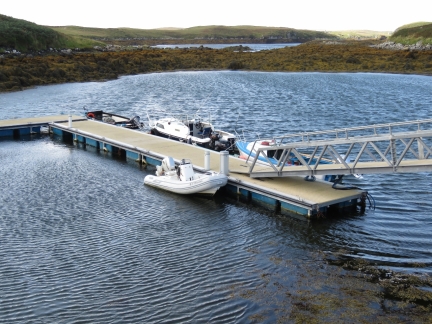 |
Moored
Position: -7 9.52, 57 35.81
The tender tied off at the Loch Maddy Marina for a walk ashore.
|
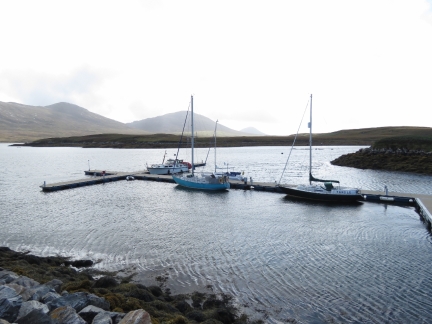 |
Loch Maddy Marina
Position: -7 9.52, 57 35.81
Looking down at the Loch Maddy Marina from ashore. Adjacent to the light blue vessel is Morven, whose owner Richard we’d met at Loch Skipport. The ferry dock is outside the photo, directly to the left. When the Hebrides grounded, it would have ran right through the marina.
|
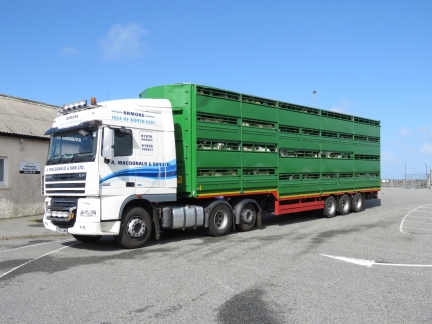 |
Sheep
Position: -7 9.43, 57 35.81
Sheep in a truck, ready for transport, with a chorus of “baahing”.
|
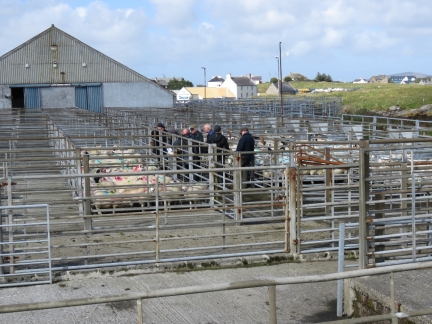 |
Auction
Position: -7 9.40, 57 35.83
Several people were buying and selling sheep near the ferry dock.
|
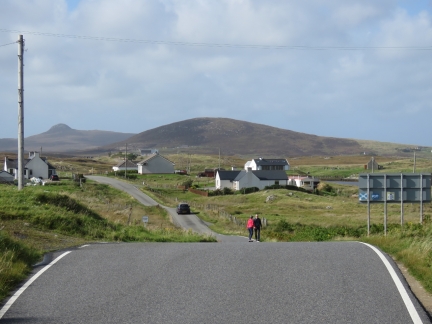 |
Pastoral
Position: -7 10.53, 57 36.44
Pastoral scene on North Uist on a walk to the outskirts of Lochmaddy.
|
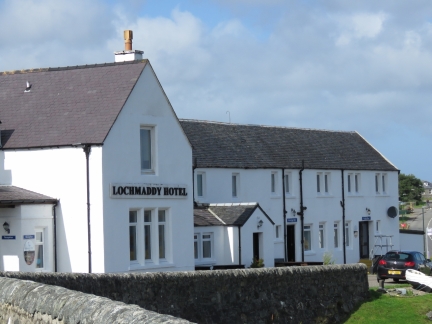 |
Lochmaddy Hotel
Position: -7 9.50, 57 35.85
We had an excellent meal at the Lochmaddy Hotel overlooking the harbor.
|
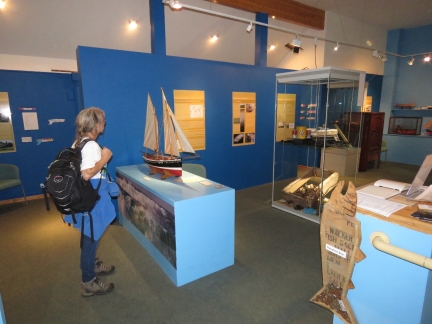 |
Taigh Chearsbhagh
Position: -7 9.54, 57 35.93
The small but information-packed Taigh Chearsbhagh museum had great displays on the Hebrides, including St. Kilda, an isolated archipelago about fifty miles to the west in the open Atlantic. We’re hoping to visit if we can get a weather window.
|
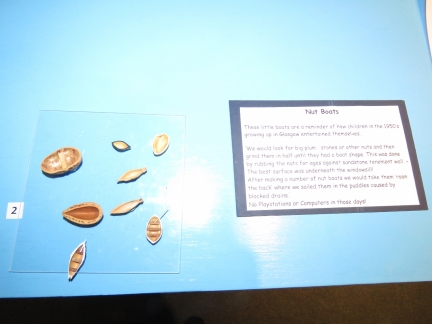 |
Nut Boats
Position: -7 9.53, 57 35.93
Children in the 1950s made these miniature toy boats from nut shells, some complete with benches and tillers. They sailed these “Nut Boats” in puddles after big rains.
|
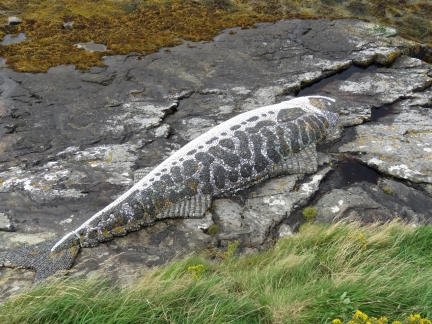 |
Mosaic Mackerel
Position: -7 9.42, 57 35.95
15-foot “Mosaic Mackerel” on the Uist Sculpture Trail near Taigh Chearsbhagh. Rosalind Waites made the sculpture in 1996 from locally found materials as part of a year long celebration of the work of famous naturalist William MacGillivray, who grew up on the Isle of Harris.
|
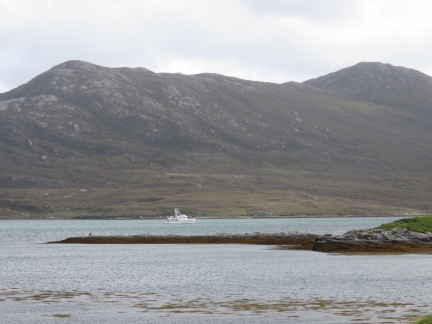 |
Anchorage
Position: -7 9.41, 57 35.96
The view from shore to the anchorage at Loch Maddy, with 862ft (263m) North Lee rising behind.
|
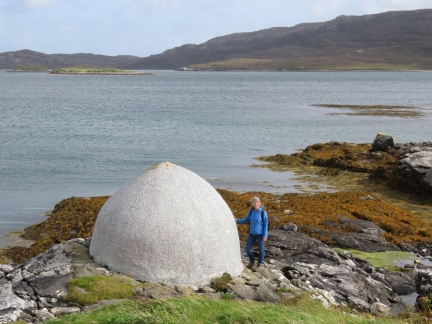 |
High Tide, Low Tide
Position: -7 9.39, 57 35.94
The “High Tide, Low Tide” sculpture on the Uist Sculpture Trail is so-named because of its intertidal location. The structure is covered with glass that reflect sunlight and resemble salt crystals.
|
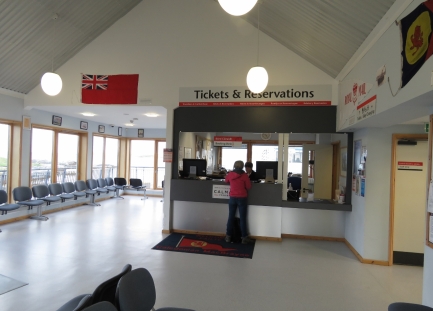 |
Tickets
Position: -7 9.40, 57 35.80
On our way home, we stopped in at the CalMac ferry terminal to pickup our tickets for a day trip to the Isle of Skye tomorrow.
|
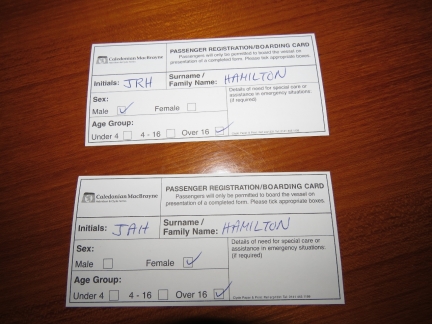 |
Boarding Card
Position: -7 9.08, 57 35.62
In addition to having tickets, passengers must also hand in a completed boarding card prior to boarding the ferry, presumably to account for all the passengers in the event of an accident. We’ve never had to do this before.
|
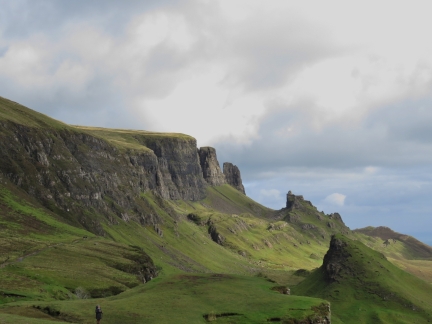 |
Isle of Skye
Position: -6 17.33, 57 37.75
The spectacular Isle of Skye scenery makes it one of Scotland’s top three tourist destinations, along with Edinburgh and Loch Ness. We had considered visiting Skye in Dirona, but instead opted to make a day trip by ferry from Loch Maddy. This gave us the added bonus riding one of the CalMac ferries, something Jennifer had been wanting to do since first seeing them in Malaig on our West Highland Line trip. Read more …
|
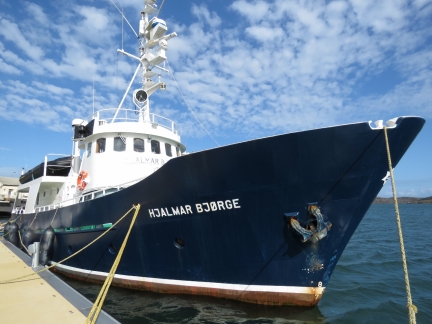 |
Hjalmar Bjorge
Position: -7 9.50, 57 35.77
We noticed the Hjalmar Bjorge in the Loch Maddy marina when we returned and went over to take a look. It is one of 13 Norwegian Rescue Ships. We know another one well—the Paul Johansen that we visited most recently in Lunenburg, Nova Scotia and frequently saw in Port Madison near Seattle.
|

|
Click the travel log icon on the left to see these locations on a map, with the complete log of our cruise.
On the map page, clicking on a camera or text icon will display a picture and/or log entry for that location, and clicking on the smaller icons along the route will display latitude, longitude and other navigation data for that location. And a live map of our current route and most recent log entries always is available at http://mvdirona.com/maps. |

Do you think a Nordhavn 60 could make it through the Crinan Canal?
Absolutely a Nordhavn 60 could go through. This year, I know of a 52 (ours), a 55, and a 57 that have been through. A Nordhavn 60 shares hull forms with the N55 so it is fine from a beam perspective. We’ve shared a lock with a 30 to 35′ sail boat behind us so the 60 would be fine from a length perspective as well. It wouldn’t be a problem but it would require care.